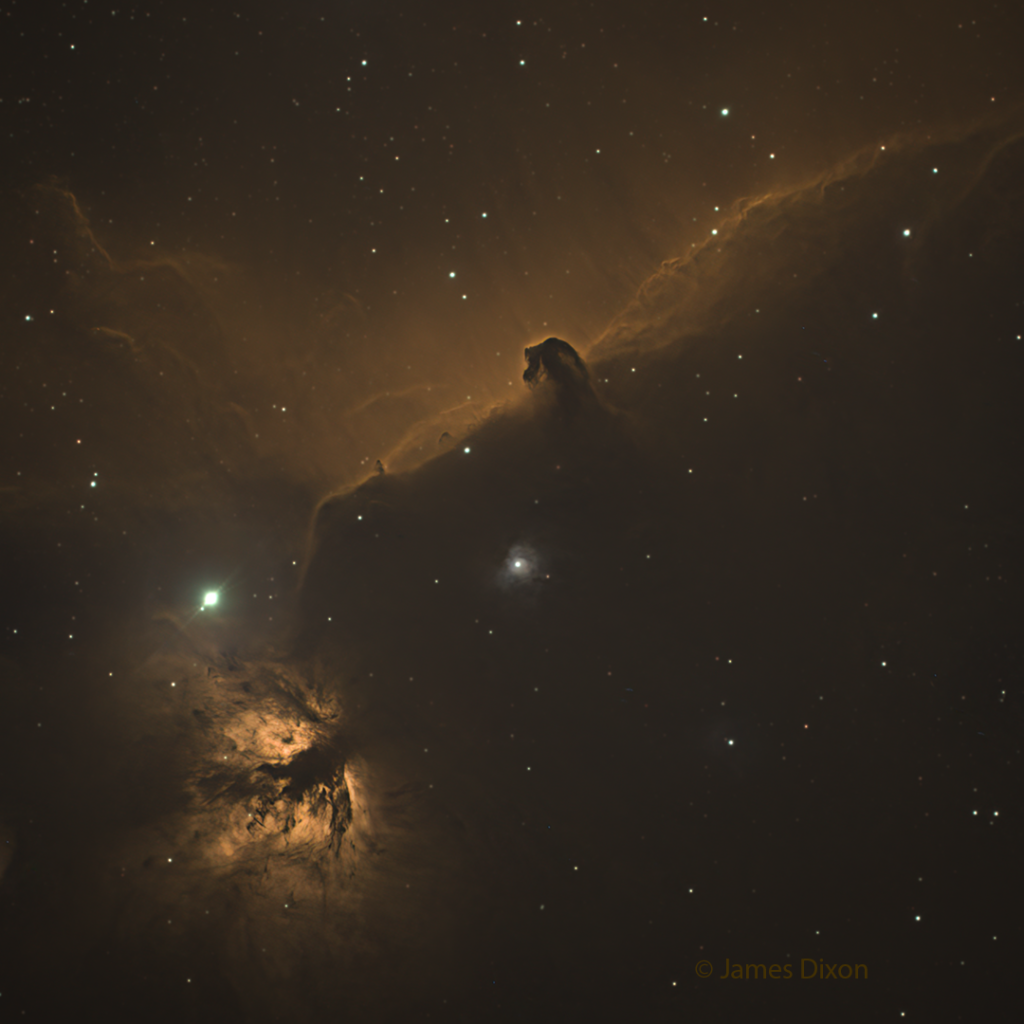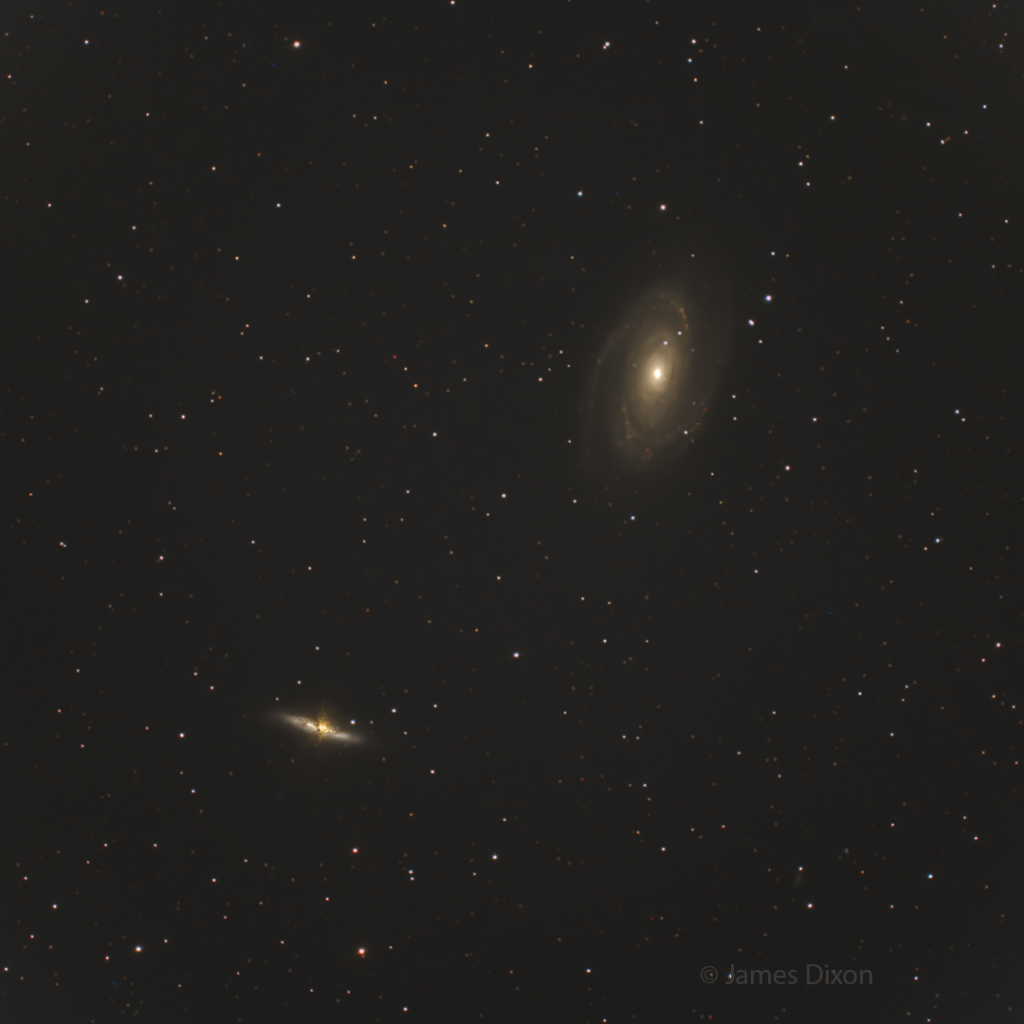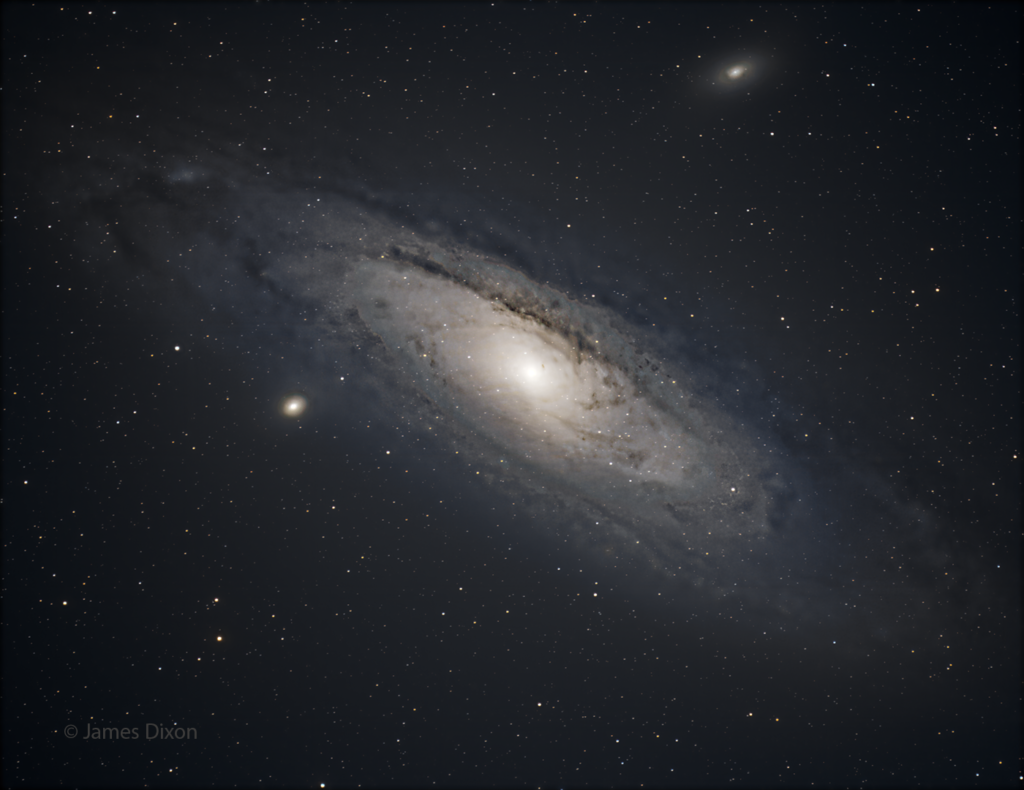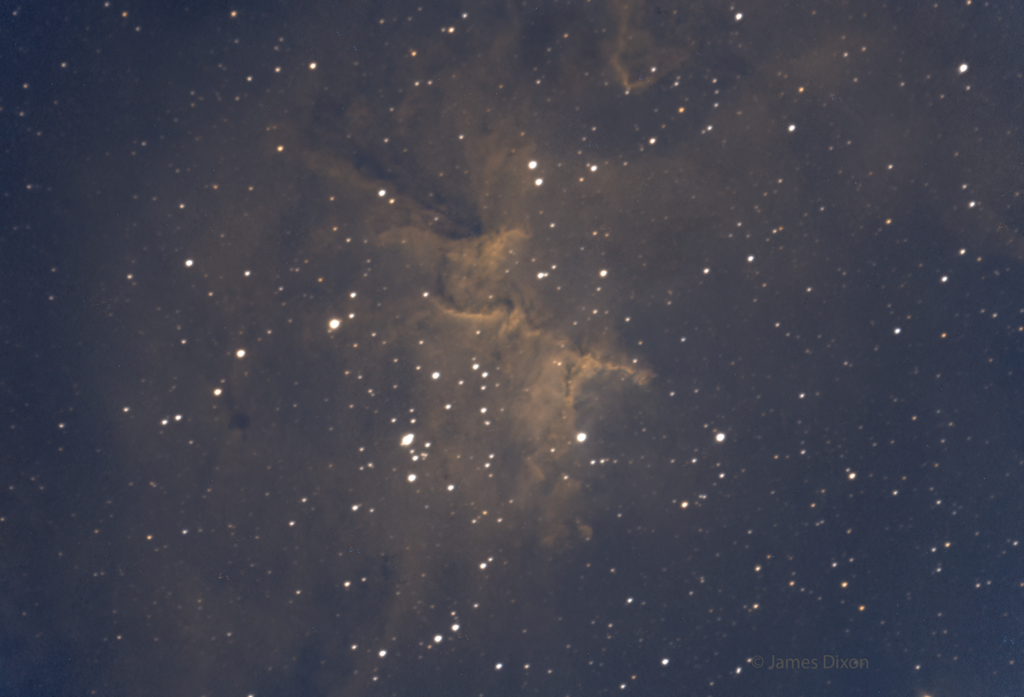After waking up at 2:30 AM for no good reason and painting some walls Saturday, I headed to the River Ridge Observatory after dinner to do some imaging. I switched my 11″ SCT to f/1.9 and started with a dual narrowband NBZ filter for a few hours before switching to a broadband light pollution filter.

I started with the Flame and Horsehead nebulas in Orion. As mentioned, this is a dual narrowband view but there was precious little Oxygen III around so it is mostly monochromatic. Something like 80 60-second images stacked together and processed in Photoshop.
Then it was time for the primary target, M81 and M82 in Ursa Major. First, I shot the scene with the dual narrowband for an hour to bring out the red in the smaller M82. Then I switched to the light pollution filter and shot another hour. Two hours is not really enough but by this time I had been up for close to 24 hours and two hours was all I had to give. Processed each separately, then combined and tweaked a little more.

M81 is spiral galaxy, of course, while M82 is a “starburst” galaxy. They are actually close to each other and the larger galaxy’s gravity has caused the starburst activity seen in the other.


